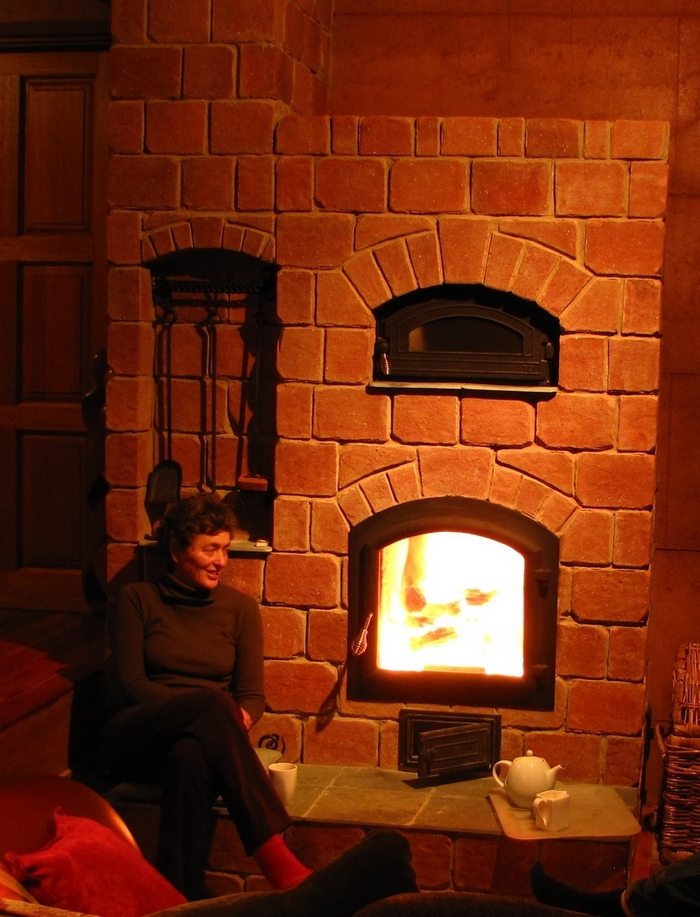Furthermore, the surface temperature of a ‘steel box’ heater can be high enough to create an unpleasant atmosphere as air and dust particles are ‘burned’ when they come into contact with it. Such a heater can also overheat a room unless combustion is stifled by reducing the air available; in which case creosote and other deposits are left in the flue, or exit to pollute the neighbourhood. Finally, even when burned fully, the internal burning temperatures of such heaters rarely reach the level needed to combust the gases given off from burning wood, leaving a third or more of the energy value of the wood you have cut, spilt and carried to go to waste.
A masonry heater operates in a different way. The firebox is filled with fuel and the fire allowed to burn with full intensity. After a couple of hours the fire is burned out and won’t need relighting for 12 to 24 hours. The hot gases are channelled through a labyrinth within the mass of the heater and release their heat to the masonry. This then steadily radiates into the room.
Wood burns at about 250°C but the gases given off need a much higher temperature to burn. The fire of a masonry heater is not immediately losing heat through a thin skin. With maximum air supply, which is pre-warmed as it enters the fire, it burns at the highest possible temperature leaving very little ash. A secondary combustion chamber completes the 600°C+ burning of the gases with the result that very little pollution leaves the heater. The air remains clean and flues do not need annual sweeping. Doors do not need to be opened for refuelling while a fire is burning (letting smoke into the house) and as logs are not being thrown into the firebox the structure can last a lifetime.
Styles


Over time the pattern of these heaters has varied in different parts of the world. The popular Finnish Contraflow heater utilises vertical channels down each side of the firebox. Swedish designs have numbers of horizontal channels within the flue. Heated benches may be formed in the system. Russian farmers would put their children to bed on top of their heaters as they were the warmest place in the house.
Ambience

This used another feature of the masonry heater; that it never gets too hot to touch. Sitting with ones back against a heater, even when it is firing; just like against that sun-warmed rock, is a pleasant experience. A masonry heater is unlikely to overheat a room. The high skin temperature of a conventional heater puts heat in an uncontrolled manner into a room which can lead to overheating and stuffy atmospheres. The lower surface temperature of a masonry heater puts heat into a room at a slower rate but for much longer such that they are still warm to the touch after 24 hours.
Emissions


There is a common misconception that wood heating is a significant contributor to atmospheric greenhouse gas emissions. Figures issued by the CSIRO in Australia show that wood is less polluting than any of the major sources of home heating apart from hydro-electricity. If plantation timber is used with its higher take-up of CO2 then actual carbon sequestration can be achieved.
The figures used were for conventional wood heaters which at best are 65% efficient. Masonry heaters can show 95% combustion efficiency and when that is also translated into the effort of cutting, splitting and carrying wood to the fire there is a considerable saving in both fuel and human labour.
Continued Page 3








